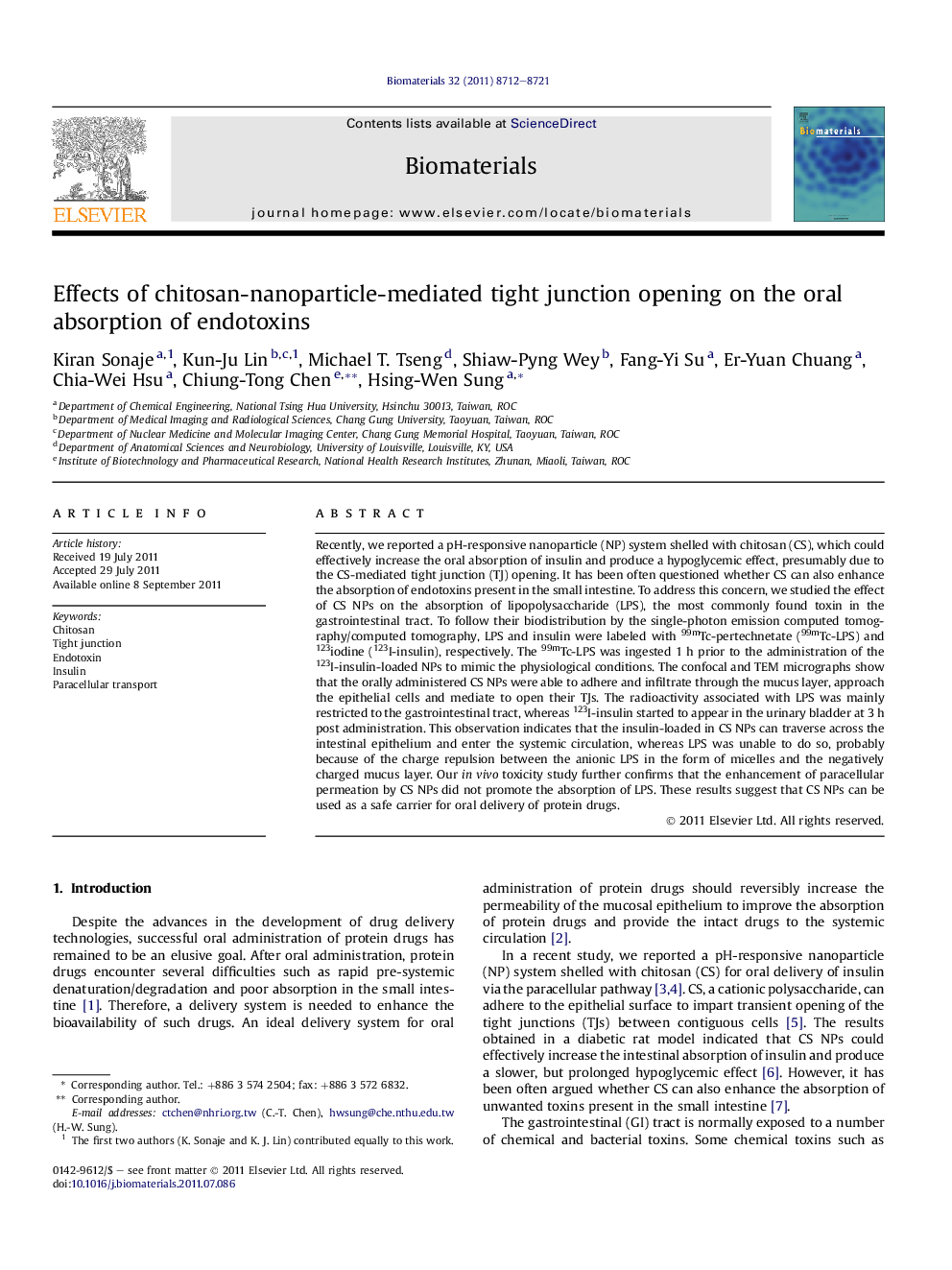| Article ID | Journal | Published Year | Pages | File Type |
|---|---|---|---|---|
| 7264 | Biomaterials | 2011 | 10 Pages |
Recently, we reported a pH-responsive nanoparticle (NP) system shelled with chitosan (CS), which could effectively increase the oral absorption of insulin and produce a hypoglycemic effect, presumably due to the CS-mediated tight junction (TJ) opening. It has been often questioned whether CS can also enhance the absorption of endotoxins present in the small intestine. To address this concern, we studied the effect of CS NPs on the absorption of lipopolysaccharide (LPS), the most commonly found toxin in the gastrointestinal tract. To follow their biodistribution by the single-photon emission computed tomography/computed tomography, LPS and insulin were labeled with 99mTc-pertechnetate (99mTc-LPS) and 123iodine (123I-insulin), respectively. The 99mTc-LPS was ingested 1 h prior to the administration of the 123I-insulin-loaded NPs to mimic the physiological conditions. The confocal and TEM micrographs show that the orally administered CS NPs were able to adhere and infiltrate through the mucus layer, approach the epithelial cells and mediate to open their TJs. The radioactivity associated with LPS was mainly restricted to the gastrointestinal tract, whereas 123I-insulin started to appear in the urinary bladder at 3 h post administration. This observation indicates that the insulin-loaded in CS NPs can traverse across the intestinal epithelium and enter the systemic circulation, whereas LPS was unable to do so, probably because of the charge repulsion between the anionic LPS in the form of micelles and the negatively charged mucus layer. Our in vivo toxicity study further confirms that the enhancement of paracellular permeation by CS NPs did not promote the absorption of LPS. These results suggest that CS NPs can be used as a safe carrier for oral delivery of protein drugs.
